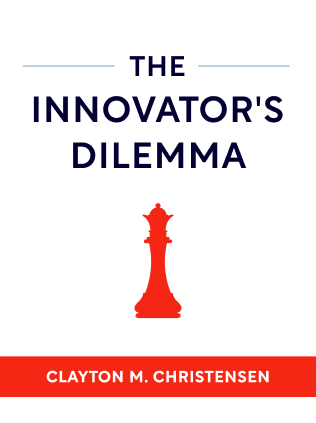

This article is an excerpt from the Shortform summary of "The Innovator's Dilemma" by Clayton M. Christensen. Shortform has the world's best summaries of books you should be reading.
Like this article? Sign up for a free trial here .
What are the principles of innovation? What do the principles of innovation look like in practice?
The 6 principles of innovation are used to navigate new and disruptive technologies. A thorough understanding of how these work in practice can help you confront disruptions.
Read on for an application of the 6 principles of innovation using automobile technology as a case study.
Applying the Principles of Innovation
Now that you understand the principles of innovation and disruptive technologies, as well as how to successfully adopt them, what does the process look like in a real situation?
We’ll go through the 6 principles of innovation applied to how a car-making company could apply these concepts when confronting the disruptive technology of electric vehicles.
Step 1: Is the Technology Disruptive?
First, the manager needs to determine whether electric cars are truly disruptive to the automotive industry, by predicting the trajectory of market demands compared to the trajectory of electric cars’ performance improvements.
Here’s a look at car buyers’ demands, and how electric vehicles stack up:
- Buyers want a cruising range (distance between refuelings) of 125 to 150 miles. Electric cars offer 50 to 80 miles.
- Buyers want 0 to 60 miles-per-hour acceleration in under 10 seconds. Electric cars can do it in almost 20 seconds.
- Buyers want a large number of options among makes and models. Electric cars only offer a small variety.
Although electric cars can’t deliver on customers’ demands now, the manager must look at whether car buyers’ demands will continue to exceed electric cars’ performance.
Based on traffic laws, demographics, and other factors, car buyers’ demands will most likely stay about the same over time. But electric cars’ performance is likely to improve enough to eventually meet buyers’ demands. This means that electric cars are almost certainly disruptive, triggering the first of the principles of innovation.
Step 2: Potential Markets Are Essential to the Principles of Innovation
Having confirmed that she’s dealing with a disruptive technology, the manager can use that information as she searches for a market for electric cars.
Most likely, it’ll take a few attempts to hit on the right market, but the manager can use three principles we’ve discussed to guide her search:
- By definition, disruptive technologies don’t appeal to the mainstream market initially, so the manager needs to find a potential emerging market where electric cars could gain traction. She should look for potential customers who are attracted to the low cruising range and low acceleration that make electric cars unappealing to mainstream customers.
- Because she doesn’t yet know who her buyers will be, market research and customer surveys will inevitably be inaccurate. She must expect a trial-and-error process, through which both the company and the customers will figure out the best use for electric cars.
- Since disruptive technologies come with so many unknowns, the business plan must be centered around learning, not executing. The manager must identify what information she’s missing, which information is most important to find out, and in what order.
Step 3: Create a Product Development Strategy
How can the manager create a viable strategy for an unknown market?
First, she can understand how performance oversupply triggers products to shift into the next phase of their product life cycles—and that this process typically creates an opening for simpler, more convenient, and more affordable disruptive technologies to take over the low end of the market. In the car industry, customers’ demand for higher speeds and longer cruising ranges will give way to prioritizing reliability and convenience. This gives the manager a sense of what attributes she can emphasize.
Second, she can ensure that the electric cars are designed in a way that they can be easily and cheaply modified to fit a new market. Knowing that the first market she targets will probably be wrong, the manager must conserve resources for second and third iterations.
Third, the manager needs to develop a product that is affordable. Since electric cars’ functionality will be far behind gas-powered cars, electric cars must make up for it in price, as well as simplicity and convenience.
Step 4: A Technology Strategy Is One of the Principles of Innovation
The technology strategy may consist of reconfiguring existing components and proven technologies. However, the manager needs to avoid hinging her product on any major technological advancements.
Many established carmakers insist that electric cars won’t be viable until there are significant improvements to their batteries. However, the batteries are only an obstacle in the context of mainstream customers’ demands. The established companies are making the mistake of trying to fit the disruptive product to the existing market.
In order to be successful, this manager must find customers for whom the battery’s limitation is a nonissue.
Step 5: Develop a Distribution Strategy
Distribution is another key component of the principles of innovation. When it comes to selling disruptive products, distributors—in this case, car dealers—typically face the same constraints as established companies. Distributors’ business models are developed around existing products and profit margins, and diverting from those models threatens their businesses.
Most car dealerships are likely to be reluctant to sell cars that bring lower profits and that don’t appeal to mainstream customers. Just as the manager needs to find a new market for her electric vehicles, she needs to find a new network of distributors to sell to that market.
Step 6: Determine Organizational Structure
With a general plan on how to move forward, the manager now needs to decide how to structure the team that will execute this project.
Considering that electric cars are a disruptive product, and all that entails—including a different cost structure and processes than the main company has for its gas-powered vehicles—the best options are to either spin-out an independent division or company, or to acquire a small company. As we’ve talked about, this separate entity needs to be small enough that small profit margins can support its overhead costs and small enough to get excited about orders and achievements that would be disappointing in the main company.
The parent company should support this entity with resources, and the independent organization should never have to compete for resources against the company’s gas-powered vehicles. However, the organization heading up the electric cars project should have a budget that’s still tight enough to push the team to turn a profit quickly.

———End of Preview———
Like what you just read? Read the rest of the world's best summary of Clayton M. Christensen's "The Innovator's Dilemma" at Shortform .
Here's what you'll find in our full The Innovator's Dilemma summary :
- Christensen's famous theory of disruptive innovation
- Why incumbent companies often ignore the disruptive threat, then move too slowly once the threat becomes obvious
- How you can disrupt entire industries yourself






